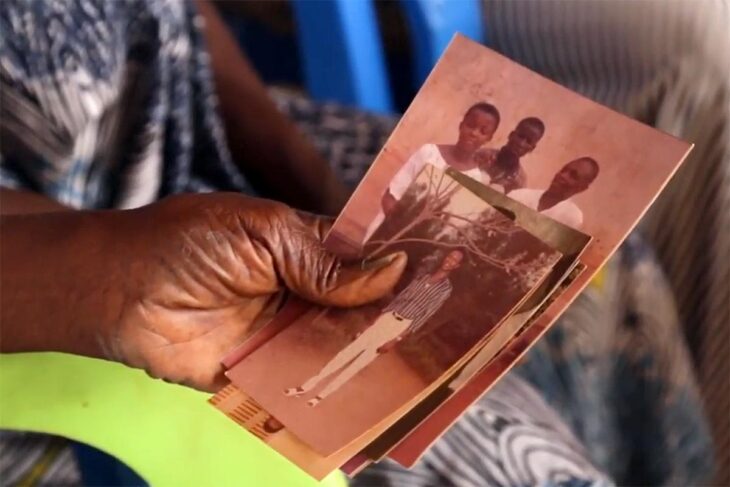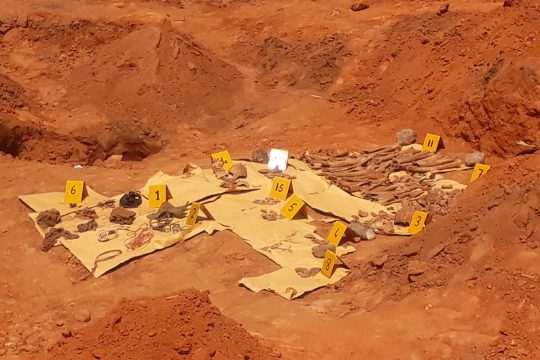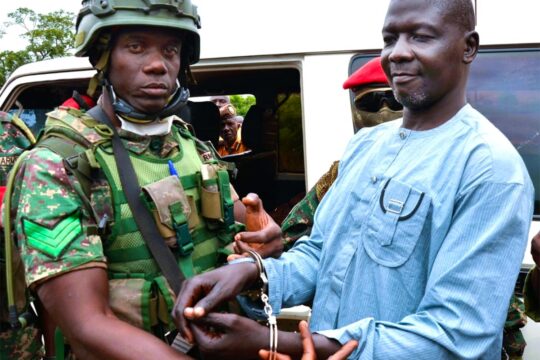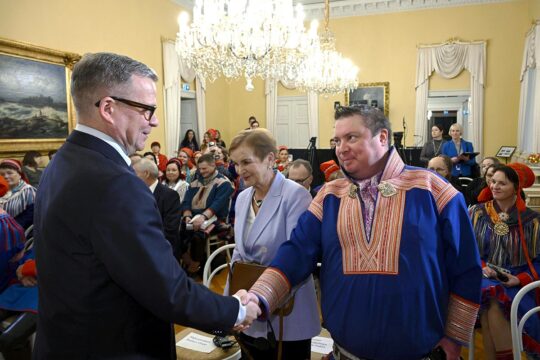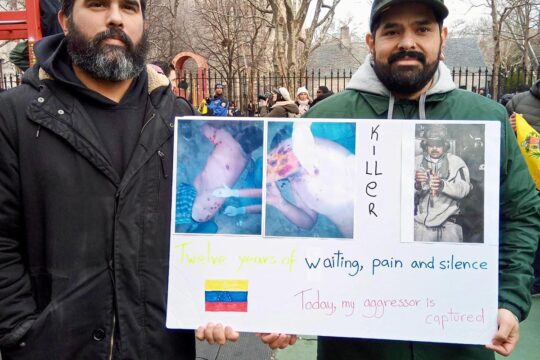Investigating cases of enforced disappearance was one of The Gambia´s Truth, Reconciliation and Reparations Commission’s (TRRC) main focus. Disappearing people was identified as one of former President Yahya Jammeh´s ways of silencing opponents or anyone he identified as a target during his reign from 1994 to 2017. From 2018 to 2021, the TRRC investigated a number of these cases. In its final report, it stated that the fate of all victims of enforced disappearance investigated by the commission were established except in four cases involving five individuals that the commission marked as unresolved, whilst there are more yet to be investigated.
The four that the commission could not resolve are the following: Kanyiba Kanyi; Buba (Bubai) Sangyang and Momodou Lamin Sangyang; Chief Ebrima Manneh; and Ceesay Bujiling.
The unresolved cases
Kanyiba Kanyi was a member of the United Democratic Party. He was unlawfully arrested at his home by unidentified state security agents on September 18, 2006, three days before the presidential elections. His family never saw him after that day. The state denied having any knowledge. There is testimony before the TRRC that he was seen at Mile 2 Prison. He was also spotted in Royal Victoria Teaching Hospital on March 14, 2008. Nothing else is known of his whereabouts. Until the time of his disappearance, he was working for the Christian Children's Fund.
Buba (Bubai) Sangyang and Momodou Lamin Nyassi. According to Ida Badjie, wife of Nyassi, these two victims, as well as Ndongo Mboob, were intercepted by unknown people believed to be members of the National Intelligence Agency (NIA) outside the Nyassis’ house in 2006. They were made to board a vehicle and taken away. Malick Jatta, a former Jungler – a notorious hit squad under Jammeh – testified that he saw people in civilian clothes, believed to be the NIA, hand over the three men to Sanna Manjang, another Jungler. According to Jatta, Mboob was executed by Manjang.
Chief Ebrima Manneh was a reporter with The Daily newspaper. He was arrested at his office on July 11, 2006 following his attempt to republish a BBC report criticising Jammeh. He was said to be seen at the Royal Victoria Teaching Hospital where he was treated for high blood pressure. He was reportedly killed and dumped in a well in Kanilai, the home village of Jammeh. Other reports indicate that he was buried at a pit behind Sare Ngai Police Station in Fulladu West, in far-east Gambia. According to Jungler Bai Lowe, who is currently tried in Germany, Manneh was killed on the same day as Daba Marenah, Ebou Lowe, Alieu Ceesay, Alpha Bah and Manlafi Corr. Despite the ECOWAS Court of Justice in 2008 ordering that the Gambian government release him and compensate him for unlawful detention, the government denied involvement. However, Jammeh acknowledged that Manneh was dead in 2011, but still maintained that the government was not involved. Although the truth commission received a statement from Bai Lowe detailing how Manneh was executed, his whereabouts remain a mystery.
Ceesay Bujiling´s case was mentioned by only one witness at the TRRC, Saihou Jallow, who had worked as Jammeh´s orderly. Bujiling was a watchman. According to Jallow, he was told by Jammeh that Bujiling would be crowned ¨the king of witches and wizards.¨ But Jammeh believed that an important person needed to be sacrificed first, and that he (Jammeh) was the target. Bujiling’s body was later found between Kanilai and Nyeffi. At the time of his execution in 2009, the Junglers were in Kanilai under the leadership of Nuha Badjie. In his testimony, Jallow mentioned that there was a phone call between Jammeh and a Jungler, Solo Bojang, to make sure Ceesay Bujiling was buried. In the final report of the TRRC the case is probably considered unresolved because it was based on one testimony, nothing was ever verified and the commission did not have time to properly investigate the case.
Families in limbo
In the absence of their loved ones, victim families continue to live in uncertainty, and some are still hoping for their return after all these years. Some families have held funerals without bodies and others are struggling with acceptance of their fate. Although the commission heard testimonies on these cases, the perpetrators often remain unknown, nor has any revelation been made about their possible burial sites.
Kanyiba Kanyi's son is now 16 years old. The father and son have never met because at the time of Kanyiba’s disappearance, his wife Isatou was still pregnant. “Since his disappearance to date, we have said a lot. I testified at the TRRC but until now my husband's fate and whereabouts is not known,” said Isatou Kanyi. “Nothing is known about Kanyiba´s case. We are confused and worried. We want to know the people who captured him, the people who disappeared him. Whether he is dead or not, nobody knows. The only thing we can say is that he is missing because we do not know if he died or whatever happened. If there was a person to narrate what exactly happened, then that would have been helpful. But until now, there has been no such person,” she added before expressing her frustration. “The people who got him in trouble, I mentioned their names at the TRRC but none of them were called and questioned about Kanyiba. All of that has gotten me worried : those people should go and explain why they did so, but none of that happened. They said that another commission would be formed to look into his issue and that of Chief Manneh. That is what the TRRC report says. But until now, we are still in the dark.”
A new task force
Indeed, when the TRRC could not establish the fate and whereabouts of these victims, it recommended that the government further investigate the unresolved cases, and create a taskforce that would look into other cases of disappearance that were not investigated by the commission. In its recently disclosed implementation plan, the government says it plans on setting up a “multi-stakeholder task force on enforced disappearance to identify the suspected burial sites not previously identified by the TRRC as well as receive reports of missing persons not previously reported to the TRRC.” This is expected to be implemented between mid 2023 and the end of 2024. It has a budget plan of 15,000 US dollars.
“When the TRRC ended, they called us and gave us some money,” Awa Manneh, sister of Chief Ebrima Manneh, recalled. “After that, we have not heard anything else. The TRRC was our only hope of finally getting to know his fate and whereabouts, but until now, the government has not said anything about it. Now we are just in a state of confusion.”
Will this change? The government has accepted the commission’s recommendation to work closely with organisations such as the African Network against Extrajudicial Killings and Enforced Disappearances (ANEKED) – a collaboration confirmed by Sirra Ndow, ANEKED’s country representative – and the National Human Rights Commission to train justice and security agents on the illegality of enforced disappearance - a violation that is yet to be criminalised in the Gambian law books.
“The TRRC had very little expertise, capacity and resources needed to search for the missing,” explained Ndow. “The task force will be calling on and joining forces with experts from other countries to guide the process, starting with the development of a comprehensive strategy and plan. The Gambia already received pledges of support from the International Committee of the Red Cross, Justice Rapid Response and the Forensic Anthropology Foundation of Guatemala to support the implementation plan. We are also expecting the government to sign up as a state party to the International Commission on Missing Persons (ICMP) which can give access to more support. We are already being supported by a team of experts, Argentine Forensic Anthropology Team and University of Chicago Global Human Rights Clinic,” he assured.


